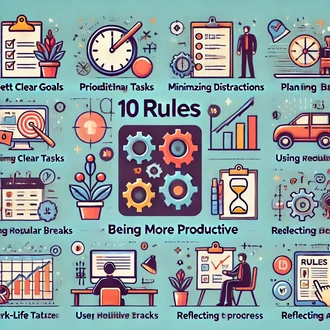Transcription Work modalities
In today's work environment, there are multiple work arrangements that go beyond the typical full-time office job. From remote work, to freelance and flexible work, each modality presents its own benefits and challenges to maintaining productivity.
In this session, we will explore the different work modalities and share strategies for choosing the right one and optimizing productivity in each.
Traditional office work
Office work involves performing tasks in a fixed physical space, usually with a 9 to 5 schedule. This modality offers a defined structure and routine, which can benefit certain individuals.
To improve productivity in this environment, it is key to implement an efficient schedule, organize your work area ergonomically and reduce distractions. In addition, take advantage of direct interactions with colleagues to strengthen team collaboration and efficiency.
Remote work
Remote work has gained popularity thanks to technological advances and connectivity. Working from home or on the go provides flexibility and autonomy, but also poses challenges in terms of self-discipline and work-life balance.
To be productive remotely, it is vital to establish a daily routine, create a dedicated workspace and minimize distractions. Define clear boundaries between work and personal life, and use technological tools to maintain efficient communication with your team.
Freelance work
Freelance work involves providing services on a freelance basis to different clients or companies. It offers flexibility, but requires a high level of organization and self-management.
To be productive as a freelancer, it is essential to set clear objectives, manage your time well and set appropriate rates. Maintain constant communication with your clients and expand your network for new opportunities.
Flexible work
Flexible work combines elements of face-to-face and remote work, offering flexibility in schedules and locations. It is ideal for those seeking work-life balance, but requires good time management and clear communication.
To be productive in a flexible environment, set a schedule that fits your responsibilities and take advantage of online collaboration tools to maintain fluid communication with your team.
Distributed teamwork
Distributed teamwork involves collaboration between colleagues located in different parts of the world. It is an increasingly common modality, but one that demands effective coordination and communication to maintain productivity.
To work efficiently in a distributed team, employ online communication tools, schedule frequent meetings and cultivate an environment of trust and collaboration. Be sure to consider and respect cultural and scheduling differences for harmonious interaction.
Adaptability and self-assessment
Regardless of the work modality you choose, the ability to constantly adapt and evaluate yourself is key to maintaining productivity. Regularly review your work methods and look for opportunities for improvement.
Adapt your strategies to the changing needs of your work environment and stay current with tools and technologies relevant to your industry. Take advantage of learning opportunities to further develop your skills and grow professionally.
modalities work




